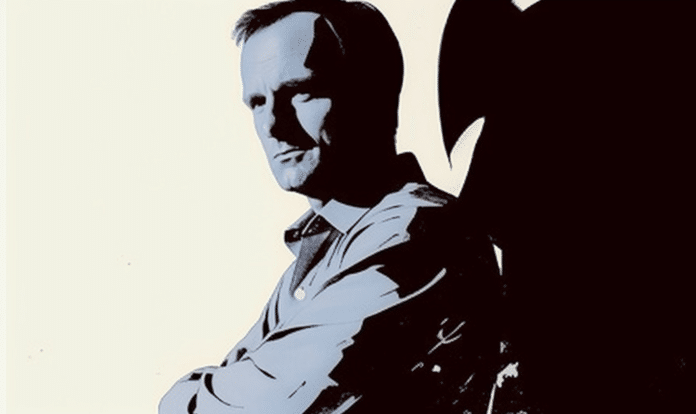In the world of advertising, there’s a new kid on the block, and it’s making quite the splash. Digital audio advertising is quickly becoming the go-to channel for advertisers, and it’s not hard to see why. With its ability to reach people virtually anywhere, from their morning commute to their evening run, digital audio is a highly effective way for brands to reach a wider audience than ever before.
Recent statistics show that digital audio listenership is on the rise, with 74% of adults in the US forming part of the digital audio listenership in 2022. Additionally, four out of 10 working-age internet users worldwide use music streaming services at least once per week, spending an average of one hour and 38 minutes listening to streaming audio services each day.
Given these numbers, it’s no surprise that digital audio ad spend is projected to hit $8.95 billion this year, making it a crucial element of many advertising strategies. But what are the trends that marketers need to be aware of in 2023 to stay ahead of the curve?
Firstly, it’s worth noting that digital audio ads have a 24% higher recall rate than traditional display ads, making them a powerful tool for increasing brand awareness and trust. In fact, according to Edison Research, 51% of podcast “Super Listeners” pay more attention to podcast ads than other types of media, and 50% agree that podcast ads are the best way to reach them. Plus, 53% of podcast “Super Listeners” say they have a better opinion of a brand that advertises on podcasts they regularly listen to.
Another trend to keep an eye on is the continued dominance of podcasts. Podcasts have exploded in popularity in recent years, with podcast listenership in the US growing by 20% in 2022. With podcasts covering a range of topics from news to lifestyle, they provide listeners with diverse content and business perspectives. In 2023, deploying podcast ads as part of a well-rounded marketing strategy will be a smart move for marketers. Automation and programmatic capabilities will become more advanced in audio advertising, and marketers will need to focus on highly personalized creatives for their target audiences.
One thing that has held audio advertising back in the past is the perception that it is an awareness-only channel, leading to disproportionate budget cuts affecting audio ad spend. However, with the advent of programmatic audio advertising, we will see more highly-targeted audio ad campaigns that can move listeners through the funnel, making it a full-funnel channel. Brands can now measure the effectiveness of their audio advertising and create retargeting ads that drive both awareness and conversions to move listeners down the funnel.
Finally, companies need to embrace programmatic ad automation in their audio advertising campaigns. Programmatic audio advertising allows advertisers to deliver targeted audio ads to listeners via online streaming platforms, podcasts, or other digital audio services. It enables advertisers to target their ads more effectively, leading to higher engagement and better results. Additionally, programmatic advertising can be automated, making it easier and more efficient for advertisers to manage their campaigns.
A company leading the charge in this space is A Million Ads. Founded in 2015, this UK-based startup is on a mission to make audio more effective as an advertising channel. By powering dynamic creative optimization for audio channels, A Million Ads enables brands to deliver highly personalized ads to listeners in real-time. Their platform uses bid stream data to give a real-time view of the listener’s environment, enabling personalized messaging that resonates with the audience.
Paul Kelly, Chief Revenue Officer at A Million Ads, believes that audio advertising will rival visual advertising and become a full-funnel channel, driving both awareness and sales. Companies that have heavily invested in podcasting will continue to reap the rewards, and we can expect to see even more investment in monetizing the podcast business. As for ad automation and brand safety, Paul emphasizes that brands need to be in the game to benefit from the intimacy and memorability that audio offers. He believes that automated systems can tackle the hard work of brand safety, using metadata and machine learning to identify potentially “brand unsafe” topics and phrases.
Audio advertising is going to be just as, or even more effective than visual advertising in 2023. Companies that have heavily invested in podcasting will continue to reap the rewards. Advertisers need to start producing creative with personalization at the heart. Over the next 12 months, audio advertisers will bring those inventory sources together with a unified measurement and attribution product.
Audio advertising becomes a full-funnel channel, and during a recession, advertisers will steer away from focusing on only one part of the funnel and turn to mediums like audio that cement into a consumer’s subconscious and ultimately drive awareness and sales. Advertisers will no longer sacrifice awareness-building campaigns in favor of performance campaigns that drive sales.
A Million Ads wants to make audio more effective as an advertising channel, appreciating the position of all the main parties: creators and media owners, advertisers, and listeners. Audio advertising that is environment aware, and thus more relevant, timely, and interesting in terms of the message leads to better outcomes for all these parties.
With nearly 450,000 active podcasts, listening to every episode is untenable. Fortunately, the industry has automated systems that can tackle the hard work. We can learn a lot from the metadata, and we also have the tools to look at each episode individually, using speech-to-text algorithms and machine learning to identify potentially “brand unsafe” topics and phrases.
From Paul Kelly’s experience, he believes that Under Armour is leading the pack in terms of delivering exceptional audio advertising campaigns. Working with digital marketing agency Digitas, they ran a campaign promoting their new Flow Velociti Wind sneakers. Under Armour understood its target customer’s rhythms and behaviors and incorporated that into the ad creative by using readily-available contextual data.
Dan Granger, the CEO of Oxford Road, also shared his insights on the evolution of the agency and the trends in the audio advertising industry. He emphasized the importance of brand safety and suitability, predicting that this will continue to be an important consideration for marketers in 2023 and beyond. He also highlighted the emergence of international podcasting as an opportunity for companies to reach audiences outside of the US.
However, Granger cautioned that the adtech industry in audio needs to focus on increasing the integrity of its tools to minimize reputational damage. He advised companies to find attribution methods that they can trust, follow the lead of other sponsors who speak to a similar target audience, and create ad copy that has shown performance on other media. He also emphasized the need to adapt ad copy points so that they can be delivered authentically by the host of the program in their own voice.
Overall, Granger’s insights emphasize the importance of aligning brand values with business objectives and finding effective ways to measure and verify audio ad campaigns. As the industry continues to evolve, companies that invest in brand safety and attribution methods will have a significant advantage. And as always, it’s important not to overpromise and under-deliver in the adtech industry – or you might end up with a PR nightmare on your hands!
It is very clear that audio advertising will continue to grow and evolve. As the popularity of digital audio continues to rise, so too will the effectiveness of audio advertising. With advancements in programmatic advertising, dynamic creative optimization, and personalization, brands can connect with consumers through sound like never before. As such, marketers who stay up-to-date with these trends and invest in audio advertising will have a significant advantage over those who don’t.




















